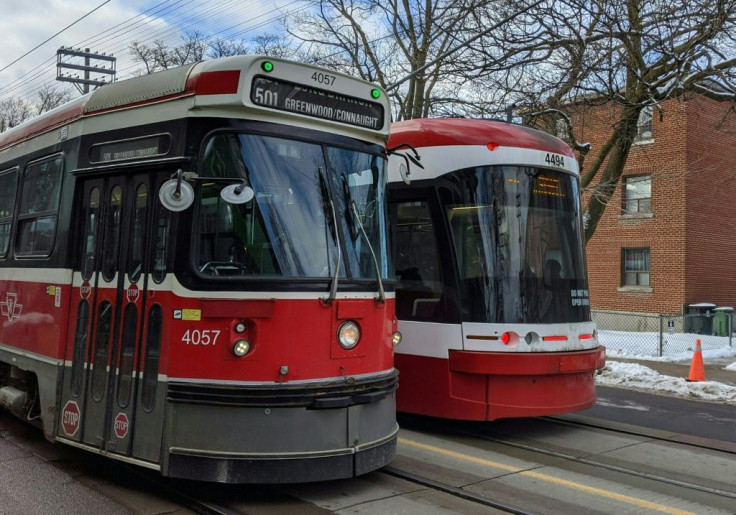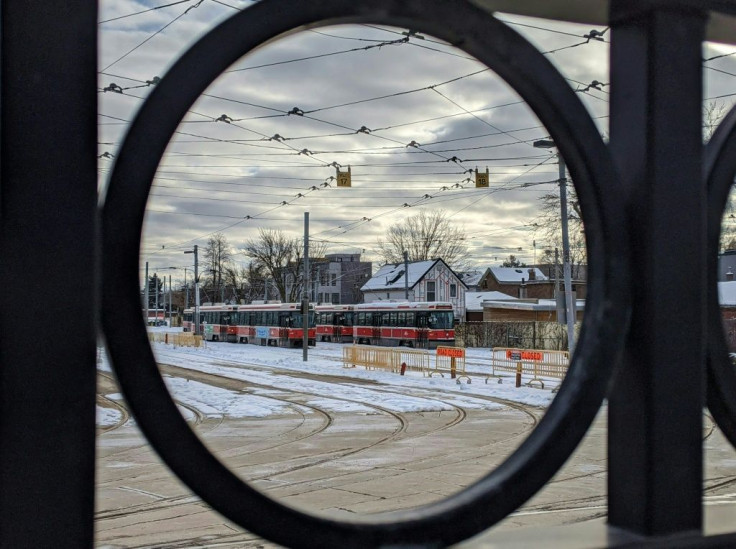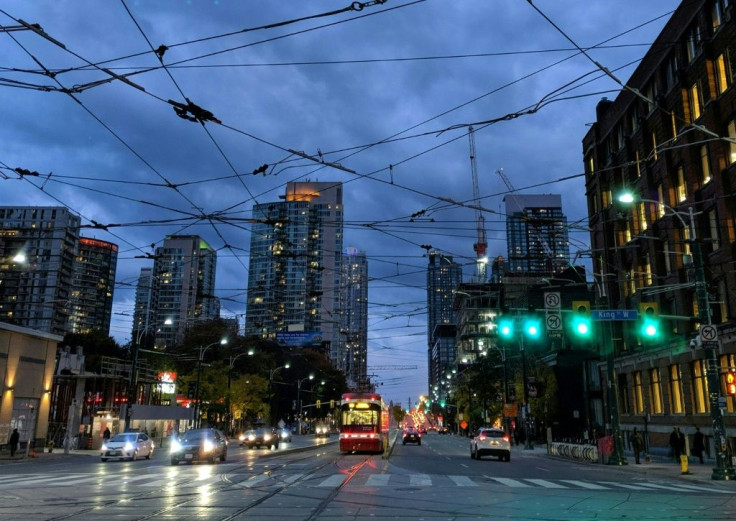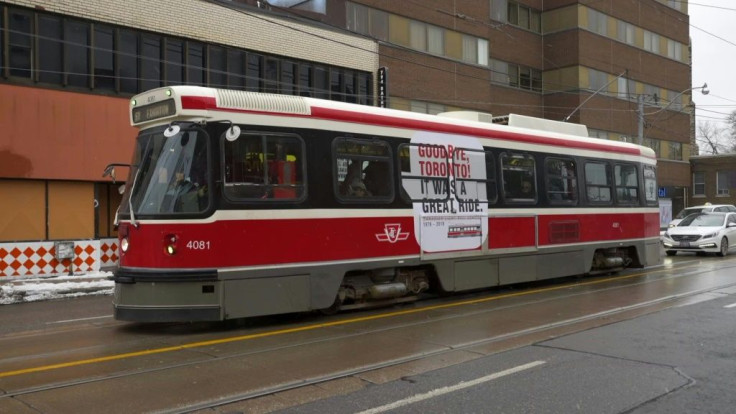Toronto's Old Streetcars, A Symbol Of City, Leave The Rails

Toronto, Canada's biggest city, is known for a few things: the iconic CN Tower, the ice Hockey Hall of Fame, great food from around the world and its historic streetcars.
But by year's end, the trolleys will be retired and replaced with sleek new trams -- a decision that has been met with a mix of sentimental sadness and scorn.
"I like these streetcars because they have a history in Toronto," says 37-year-old Kenneth, riding at the back of one of the old trams on line 511, running along Bathurst Street.
"They're an icon."
Toronto's original 19th century trolley cars were pulled by horses, before the cars were powered by electricity in the 1920s.
The historic tall, narrow, red and white streetcars, formally known as Canadian Light Rail Vehicles (CLRV), were commissioned in the late 1970s.

To board, riders must climb three big steps. To request a stop, one pulls down on a yellow cord pinned to windows running the length of the trolley car.
Toronto is one of the rare major cities in North America, along with San Francisco, to have maintained major tramway networks. Lines still exist in a handful of cities including Cleveland and New Orleans.
The Toronto system serves an average of 65 million riders a year.

Streetcars were once the main form of public transit in the continent's cities, but after World War II, cars and buses took over, and hundreds of kilometers (miles) of tracks were ripped out.

After years of debate at city hall and under pressure from activists, Toronto decided in 1972 to maintain its network, which is now composed of 11 lines running through the heart of downtown.
The old-time streetcars are now celebrated and an emblem of the city, appearing on t-shirts and posters in souvenir shops and on toy shelves.
"Toronto can be a little bit plain sometimes, and streetcars are one thing that has made us kind of different," Mark Fiorillo, who has lived in the city his entire life, says with a hint of nostalgia.

"No other streetcar looked like that: like beasts or tanks," he said. "They were quite cool."
Fiorillo heads up a charity called CityFund, that focuses on getting Toronto residents to be more engaged in their city.
With the support of the city's transit commission, Fiorillo launched an art project called "A Streetcar Named Toronto" -- a nod to the Tennessee Williams play.

One of the old hulking trolley cars was splashed in brightly colored paint and is one of a handful still in circulation. The final day of service will be December 29.
Most of the rest of the streetcars have already been replaced by new trams built by Bombardier.
In 2009, the Montreal-based company won a contract from the city for more than Can$1 billion (US$750 million) to provide 204 new streetcars.
After several delays, the company accelerated assembly work and promised to complete the order by the end of December. Nearly all of them have been delivered.
For Scott Haskill, manager of project development at the transit commission, the old trams -- which were aging and not adapted to those with disabilities -- had "come to the end of their natural life."
The new Flexy Outlook streetcars, with softer curved features that echo new Bombardier models already in use in Berlin and Brussels, have low floors and no steps.
They are also longer and wider and can hold more passengers, Haskill told AFP.
"We needed bigger streetcars because the routes are so busy and we needed more capacity," he explained.
Not everyone is sad to see the old streetcars go.
"I don't care," says Bernadette Beaupres, a 61-year-old commuter who rides public transit an hour each day and describes the experience as "absolutely horrible."
Because the streetcars share space with cars and bicycles in a greater metropolitan area that is home to six million residents, they contribute to, as well as suffer from, gridlock.
The new trams are "fancy looking," Beaupres admits as she steps off a new streetcar on Queen Street, which runs almost the entire length of the city.
"But we're such a congested city that the streetcars are actually very slow," she said, adding that if one breaks down, 10 more will get stuck behind it on the track.
According to the city's transit commission, most of the old streetcars are headed to the scrap heap.
A few will be added to its collection, which includes models dating back to 1923 and 1951. Others will be displayed at specialized museums such as the Illinois Railway Museum near Chicago.
And a handful are still available to hire for parties or weddings.
© Copyright AFP 2024. All rights reserved.




















